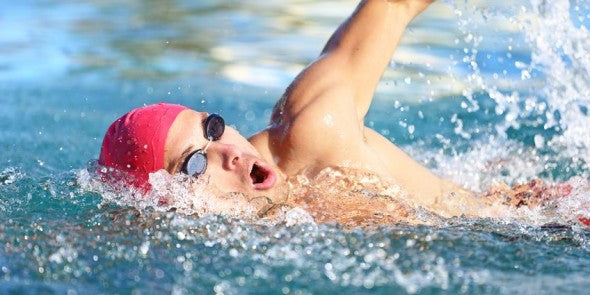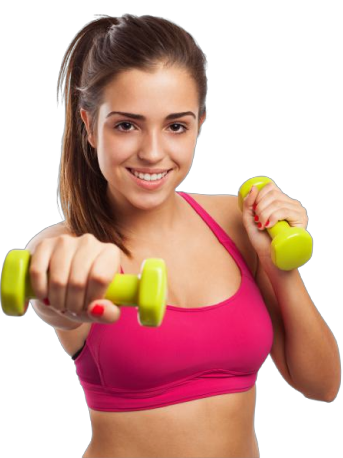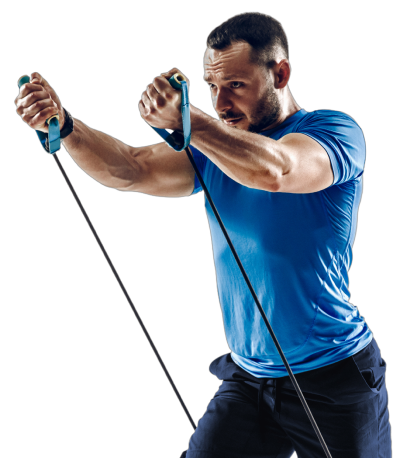
Swimming is a great exercise to build cardiovascular fitness and endurance. It is also the rare activity that an individual can pursue his or her entire life. The US Master Swimming Championships has a competitive age group of 90 plus.
The three primary motivations for starting a swimming program are getting in shape, weight management and improving body composition. Swimming is ideal to achieve these goals because it produces significant energy expenditure while using multiple muscle groups. As an added bonus, swimming creates less stress on joints which translates into fewer injuries. A number of excellent training regimens for new swimmers can be found on the web.
SWIM STARVE PROGRAM
Regardless of whether you are a new swimmer or one who is returning to the sport after a long hiatus, paying attention to proper nutrition can deliver considerable benefits in terms of reaching your fitness goals. Unfortunately, most swimmers pay very little attention to nutrition. In the typical scenario, the new swimmer who wants to get in shape, doesn’t eat or drink before or after their workout. Their rationale is, “I’m losing weight because I’m burning calories and not eating”. However, that is not reality. Studies show that swimmers who neglect to eat after a workout will consume more calories during the remainder of the day.. The problem is, they will get no fitness benefit from consuming these additional calories. The “swim-starve” program also has other implications. It produces greater muscle soreness that often leads a new swimmer to stop. The “swim-starve” routine may prevent building lean body mass, which is one of the reasons that an individual started swimming in the first place. For the more serious swimmer, the “swim-starve” routine may represent a serious impediment to improved swimming performance.
Fortunately for both the new and experienced swimmer, nutrition, particularly post-exercise, can prevent many of these issues. It seems counterintuitive that eating after exercise will help you become more fit and improve body composition. However, studies have shown that consuming the right combination of nutrients after exercise reduces muscle damage, thereby diminishing muscle soreness, stimulates muscle protein synthesis, thereby increasing lean body mass, and increases your endurance the next time you work out.
CAUSES OF MUSCLE SORENESS
Any time you engage in moderate to strenuous exercise, your muscle machinery goes into overdrive converting nutrients into the energy required by working muscles. However, your muscles can only store a fixed amount of energy in the form of glycogen. When muscle glycogen is depleted you fatigue or bonk. As working muscles deplete glycogen stores there is a simultaneous increase in the level of stress hormones. One of the primary actions of stress hormones is to break down other nutrients, such as protein, for the energy needed for muscle contraction. In other words, your muscles are breaking down lean body mass to use as energy. And because you are breathing harder during exercise there is a buildup of destructive molecules called free radicals. Free radicals can damage muscle fibers leading to increased muscle soreness. Even after you finish your workout, the processes that cause muscle damage continue to operate.
After reading this sequence of events you may be .wondering if exercise is bad for you! The answer is these physiological effects are temporary and preventable whereas the ultimate benefits of exercise are long-term. The important point to keep in mind is that nutrition is the key to maximizing the benefits of exercise while minimizing the negative effects.
PAY ATTENTION TO REFUELING
Fueling during your swim workout can have an enormously positive impact on your swim performance and reduce the deleterious impact of stress hormones. Although it is difficult to refuel during a swim workout, you can leave a sports drink on the deck so you can consume a few ounces between sets. Minimally, consume one before your swim workout begins. The sports drink provides readily available nutrition to your muscles that can be converted into energy. This conserves the muscle’s limited supply of energy, reduces the buildup of stress hormones and extends your endurance.
THE RECOVERY WINDOW
It is when your workout ends that nutrition plays its most critical role. This is the time when muscles are restored, repaired and regenerated. All of the processes that help repair damaged muscle tissue, build new muscle and replenish muscle energy are activated immediately after exercise. It is almost as if a switch was turned on. However, this switch has a timer. After 45 minutes it automatically turns off. We call this 45 minute interval the “muscle recovery window.” To take full advantage, all you have to is consume the right combination of nutrients within 45 minutes after a workout. This means consuming more than just water. Although it is essential to replace any fluids lost, it is equally important to consume the optimal nutrients.
Based on research in the early 60’s, exercise scientists believed that the ideal recovery beverage contained carbohydrate, electrolytes and water, which is the composition of most sports drinks. In the late 1990’s, however, researchers from the University of Texas demonstrated that consuming a beverage containing carbohydrate and protein in a 4-1 ratio plus water and electrolytes, dramatically improved the recovery process. The researchers found that, compared to a carb-only sports drink, a carb-protein combination:
– Reduced muscle damage by 83%
– Improved rehydration by 15%
– Increase in endurance the next time you workout up to 50%
It has become quite fashionable to consume a protein drink after a workout. Although additional protein can be a significant benefit to people who exercise, it should not be substituted for a carbohydrate-protein drink in the post-exercise period. In fact, research shows that a carbohydrate -protein drink is 38% more effective in building lean body mass than a protein drink alone when both are consumed during the recovery window.
And, just in case you are thinking that recovery nutrition is only for serious athletes, the most startling improvements in exercise performance, strength and power is seen in untrained individuals, some in their 70’s and 80’s, who incorporated recovery nutrition into their exercise regimen. The bottom line – make nutrition an integral part of your training regimen.
FIVE TIPS TO SWIM STRONGER
– Before your swim workout consume 8-12 ounces of a sports drink. Alternatively, consume an energy gel and water. This will ensure that you are fully hydrated and provide your body with an alternative source of energy during your workout for greater endurance.
– During your swim workout, keep a water bottle filled with a sports drink, so that you can drink a few ounces between sets. A carbohydrate sports drink is better than water, but a carbohydrate-protein drink is the best fuel.
– Don’t consume foods with high fat or protein immediately after a workout. Both nutrients slow the digestive process and interfere with optimal muscle recovery .Consume a protein only drink well after your workout to get the full benefits.
– Within 45 minutes after your workout ends consume a recovery beverage. Studies have shown conclusively the ideal recovery beverage contains carbohydrate in combination with protein in a 4:1 ratio.
– Consume your recovery nutrition as a beverage. This gives you the added benefit of replenishing any fluids lost during your workout. One of the fallacies among swimmers is because they are in a water medium they don’t need to consume fluids. They absolutely do.



